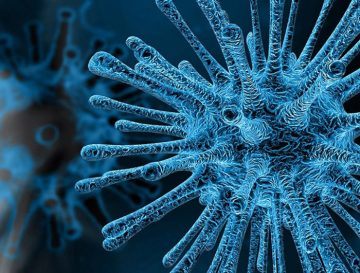Rafia Zakaria in The Baffler:
 “IT’S LIKE WE’RE AT THE CENTER of a nuclear radiation zone,” Professor Liu Liang says of performing an autopsy on a Covid-19 patient. Dr. Liang, a soft-spoken man who specializes in forensic science at Huazhong University of Science and Technology in Wuhan, China, is one of the first pathologists to undertake this dangerous task, opening up a human body that has succumbed to the virus and is likely releasing the virus from all its tissues. These bodies continue to secrete infectious fluids, and any “aerosol generating procedures,” such as the use of an oscillating bone saw, can release the virus into the air. In a small autopsy room, the doctor says, the distance between doctor and patient, the living and the dead, is rather small.
“IT’S LIKE WE’RE AT THE CENTER of a nuclear radiation zone,” Professor Liu Liang says of performing an autopsy on a Covid-19 patient. Dr. Liang, a soft-spoken man who specializes in forensic science at Huazhong University of Science and Technology in Wuhan, China, is one of the first pathologists to undertake this dangerous task, opening up a human body that has succumbed to the virus and is likely releasing the virus from all its tissues. These bodies continue to secrete infectious fluids, and any “aerosol generating procedures,” such as the use of an oscillating bone saw, can release the virus into the air. In a small autopsy room, the doctor says, the distance between doctor and patient, the living and the dead, is rather small.
Such is the nature of the virus; it transforms the body into something deadly, radiating disease in tiny unseen droplets and particles. As more and more pictures of what is inside the dead emerge, Covid-19 is no longer something inchoate or invisible. In the organs of the Covid dead, it is fully and visibly present. In some it is in the blood clots that caused strokes or in the blockages that caused heart attacks. It is in lungs that are heavy and hard; it is in the viscous fluid that often covers the lungs when bodies are opened up for autopsy. A journey through another set of autopsy pictures, published in a preliminary study by a group of Louisiana-based medical pathologists and biomedical engineers, examines organs of patients from New Orleans. A week before it was released, a data analysis conducted in southeast Louisiana found that New Orleans had the highest death rate per capita of any hard-hit city in the United States. The recovered organs depicted in the study belonged to four men and women (the numbers of each are not disclosed) all between the ages of forty-four and seventy-six; like a disproportionate number of the victims of Covid-19 in the United States, they were all African American. In death and now on cold steel tables, there are no names.
More here.
